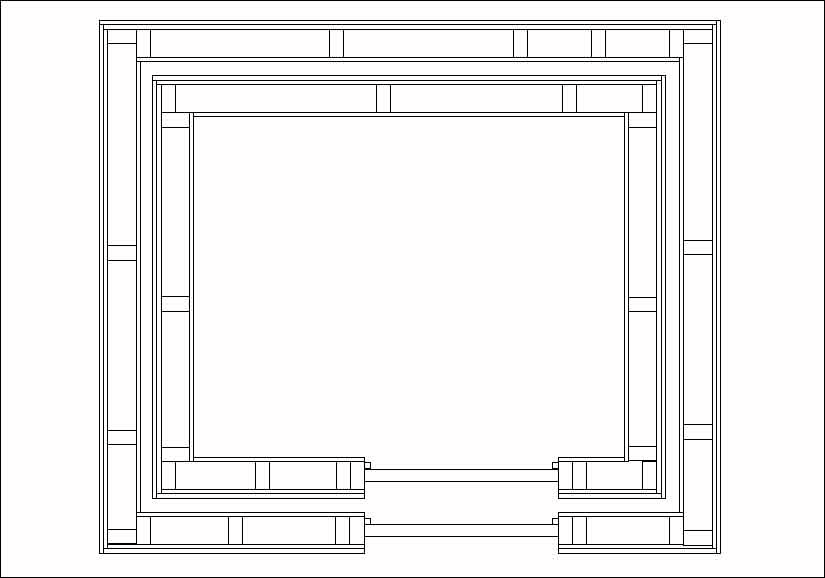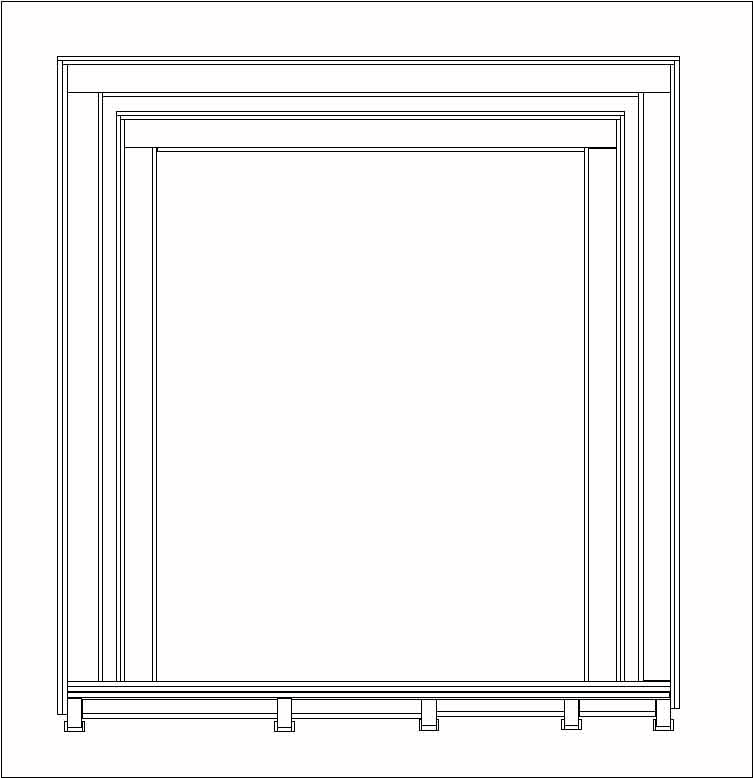Hi y'all, I've spent a while foraging and scrounging for some ideas and methods on building a VO isolation booth and I've come up with a basic design. Considering the investment it would take I wanted to post it here so hopefully you good folks could help me catch any major design flaws. In this post I'm just focusing on the main structure and walls, there are of course many additional elements such as ventilation, lighting, equipment connections etc or any internal absorbtion materials that aren't in the diagrams.
The materials I plan to use:
15mm Gyproc Soundbloc - 2 layers on the outer surface of both stud walls and 1 on the inner surface of both.
100mm thick Rockwool RW5
100 x 50mm stud timbers
19mm OSB on floor with a layer of 19mm quiet board
SheetBlok Sound Isolation Barrier )or similar - between floor boards and between outer plaster board.
U-boats on the booth floor joists.
Green glue or similar and/or joist tape for around the studs and where they butt together.
2 x 45mm thick standard firedoors
About the location: unfortunately in my home I'm plagued with flybys from a near by airbase and large trucks so I feel a lot of isolation is required.
The overall structure is basically a booth within a booth using two stud walls separated with a 50mm airgap. Two outer layers of plasterboard, 1 inner and a rubber mat isolation barrier per stud wall and the ceilings. Rockwool to fill the walls.
The floor has 100mm joists using the U-boats and rockwool between the joists and capped with plasterboard also between the joists. On top of that two 19mm OSBs sandwiches a Quietboard and 1 or more layers of the rubber mat isolation barrier. There would also be something used on top of that internal to the booth but I'm not sure which of the many options to choose at the moment.
I hope I've sufficiently shown the intention and I hope there are no major issues, please do let me know if you believe this would achieve the goal and any improvements or corrections that would help.
Thanks for your time and consideration.
Regards.





Comments
The dimensions please ? Does it have to be square ?
The dimensions please ?
Does it have to be square ?
The internal space dimension are 152 x 120 x 196cm (5' x 4' x 6'
The internal space dimension are 152 x 120 x 196cm (5' x 4' x 6'6")
No it doesn't have to be square.
Thanks
So as I understand this....you are going to stand/sit in a booth
So as I understand this....you are going to stand/sit in a booth 5'x4'x6.5'...to do VO work? I believe that will be a pretty small area to try to get a natural, 'dry' sound in. Voices tend to be "chesty" and "boxy" sounding in a space that small. How are you going to get fresh air into that space?
thats because of the comb filtering effects in small booths. F.
thats because of the comb filtering effects in small booths. F. Alton Everest's book, Master Handbook of Acoustics specs for the smallest vocal booth ; 5' X 6' X 11'. it will help to install a QRD diffusion in the booth.
Hi Guys, thanks for the responses. I would very much like the b
Hi Guys, thanks for the responses. I would very much like the best sound I can get, I'm afraid though I'm very ignorant of acoustics. The room I'm using could accommodate a much larger booth I just arbitrarily try to restrict it to a corner, it certainly doesn't have to be that way.
A few factors have already changed. The plasterboard will only be utilised on the outer wall surface and the inner booth wall. Also the U-boat and floated floor have gone from the design.
I will take Kurt's advice and have a look at that book, I've been put off by the advanced science and math of the proper physics study of acoustics. in my fumbling around for info for this project it really has been nowhere near enough info or way too much.
Thanks again.
Regards
Some of it can be pretty heavy reading - but if you are trying t
Some of it can be pretty heavy reading - but if you are trying to build the best space you can, it's better to know how to do it properly than to just guess.
Acoustics is math and physics, there's just no way around the fact that you have to learn these things, if you want a space that will result in good acoustics, and ultimately, good-sounding recordings.
Ventilation is important. If for no other reason than not passing out in the middle of a take due to lack of oxygen ( or too much CO2.)
Passing out is highly overrated. LOL
I can't tell you how to do this stuff, as I'm not an acoustics expert.
What I can offer, are some thoughts as to which mic(s) you end up using.
Mics (and preamps) matter ( a lot) for any vocal work, whether it's singing or VO work; so you should do some research on these, too.
For VO work, look to an EV RE20, or a Shure SM7. If you do end up with the Shure, make sure that you have a preamp with enough gain to power it, as SM7's are inherently very low output.
They are a great-sounding dynamic mic, but they do need enough gain to perform at their optimum.
On that note, you could also consider something like a Cloudlifter, or Cathedral Pipes Durham - these are inline boosters that tap into the phantom power on your existing preamp, and convert it to additional gain for the mic.
These are also useful for Ribbon mics, which are also traditionally very low in output.
Condenser mics are also commonly used for this type of work - but you'll want to make sure that it's a very GOOD condenser, and by "good", I'm not talking about a Behringer or a Samson. ;)
FWIW.
The drawings above represent the worst possile way.to design a v
The drawings above represent the worst possile way.to design a vocal.booth. Not only is it square and short and has no ventilation but it is a 4 leaf.
You would be better off in a closet; )